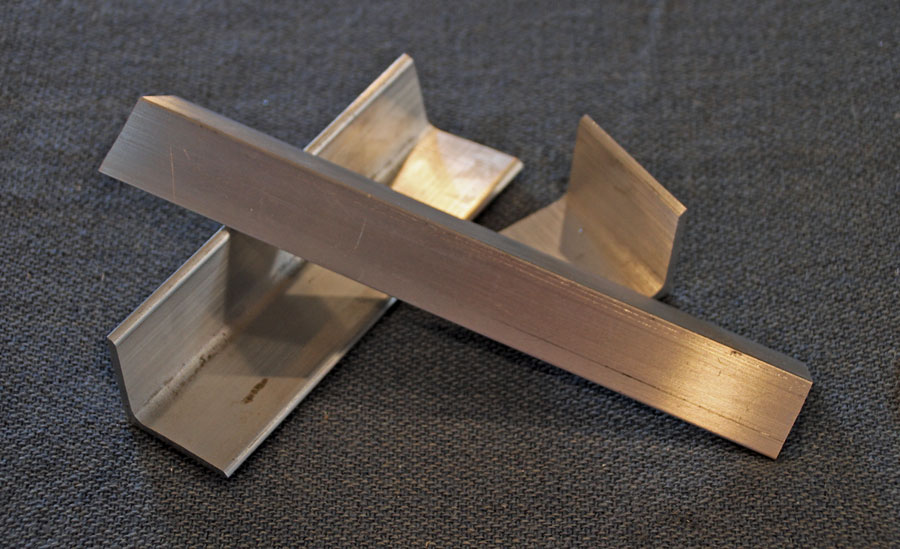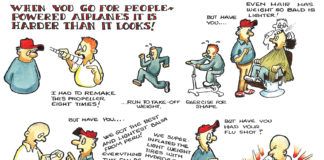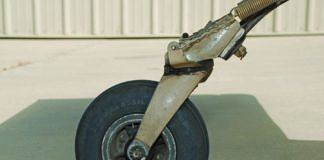Throughout human history, societal groupings of like-minded people have developed certain requirements for new members aspiring to join their fraternity. Whether it be a nation, a social club, a church, or a professional society, it is usually necessary for the aspirant to prove that they are worthy of joining those already members. Aviation is no different. We expect pilots to show a certain level of skill, designers to earn respect with excellent aircraft, and those involved in building those designs must show their readiness as well. The rite of passage may vary from locality to locality, or within certain subgroups, but we can generally agree that some things are necessary to prove that you are truly worthy of being called a builder of aircraft.

In the metal-building world, no one can be considered a true builder if they haven’t drilled a hole in a finger—at least once. More than twice and we begin to wonder, not about your commitment to the task, but of your ability to learn from pain. (I know this because I am typing this with a Band-Aid on my finger where I got myself for the second time in my building career. Just a flesh wound…nothing serious.) Drilling one’s finger is nevertheless a true indication that you are a metal airplane builder, and at some point, you got in a hurry to finish a line of holes before going in for dinner. Yes, you’ll eventually do it, but we don’t recommend grabbing a drill and getting it done with.
Building a part backwards is less common these days, with pre-fabricated parts so prevalent in modern kits. Yet it still happens to the best of us, especially when reading engineering drawings upside down because you didn’t want to walk around the table to get a simple measurement. It especially happens when one drawing is provided for the “left” and “right” parts with the note, “Make the left the opposite of the right.” What exactly does “opposite” mean when you’re working in three dimensions?
Using the wrong piece of raw stock is another way true builders join the club, especially when that piece of raw stock is the longest piece of angle aluminum in the kit. Many have joined this club, which leads to the realization that you just cut the material intended for the longerons. Oh, the replacement material isn’t very expensive—but shipping a 14-foot-long piece of aluminum sure can enrich the coffers of your favorite long-distance shipping company. Those who have participated in this particular rite will often have additional material shipped at the same time as the original piece, just to play it safe.
It is no longer considered mandatory to break your canopy blank to be considered a true builder, but there are still some companies that will happily sell you an extra one (when you buy the first) for a deep discount, especially when the shipping is expensive, and the two can nest together nicely in one box. Like buying extra long stock, it is often cheap insurance.
Another common way to prove that you are a true builder is to make a modification to the kit that looks great, but proves impossible to install or maintain later on. Lots of thought goes into airplane design, and the reasons some things are done certain ways, or in a certain order, is because the original builders boxed themselves into a corner the first time around, and they had to figure out how to prevent later builders from making the same mistake. Their cryptic instructions might have seemed like they were asking you to take a long way around—but usually, it’s a good idea to follow their breadcrumbs.
Fabric builders know well the pain of stabbing themselves with a long rib stitching needle—or worse—stabbing their spouse with said needle after they have agreed to lie under a wing and pass the needle back and forth. Experienced builders who have done this deed often stab themselves quickly to take care of the potential for revenge to sneak up on them.
Composite builders who wish to enter the true guild know that they need to mix a paper cup of resin and hardener to make a slurry, but they discovered that they made too much and used a “fast” hardener to do it. The first clue they got was when the heat of the reaction started to smoke, followed by a rapid burning of the fingers, leading to a dropped cup and subsequent mess. Note that a multi-type builder might have both a burn scar and a drill bit scar on the same fingertip—true badges of homebuilder honor!
Oh—and whatever your building pleasure, no matter the materials, no matter how many times you have built, there is always one more rite of passage to go through, especially when you reach the point of flying your finished creation. For instance, will anyone who has not discovered that they forgot how to open the canopy (or door) from the inside please raise their hands? Yeah, I thought so…














Yes, I found out just how sharp the edge of a sheet of 304 stainless gets when you cut it with a sabre saw. I call it “Having some skin in the game”.
On the plus side I found out blood cleans off stainless without much effort.
Drill a hole in your finger, how did you know? Can I send you a picture of the scar on my left index finger? Yep, I was near the end of my build and in a hurry that night. I didn’t listen to the inner voice saying “use a piece of wood” to back up the windshield that I was drilling. I had my son take me to the ER where I got a couple stiches and a tetanus shot.
Oh, I learned how to do that years ago in a part-time job during college. Right index finger in my case since I’m left-handed. So…. on to other painful lessons.
LOL Left index finger nail still deformed 44 years later from being on the wrong side of a wing when a rivet was being drilled out.
Yup, got my finger drilled back in 1964. Was working summer job at Meyers Aircraft putting skins on the stub wing of Meyers 200.
Reminds me of (way, way back) the very first day of A & P school. The instructor was very accurate when he pointed out, “A good airplane mechanic will stop at least once a day….and check the color of his blood!”